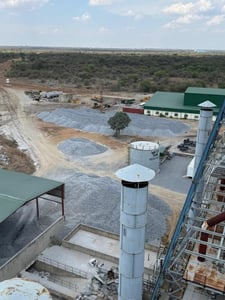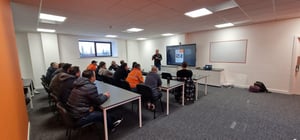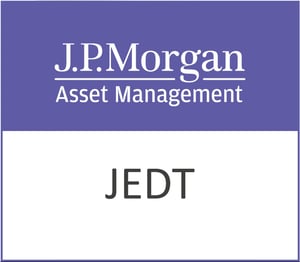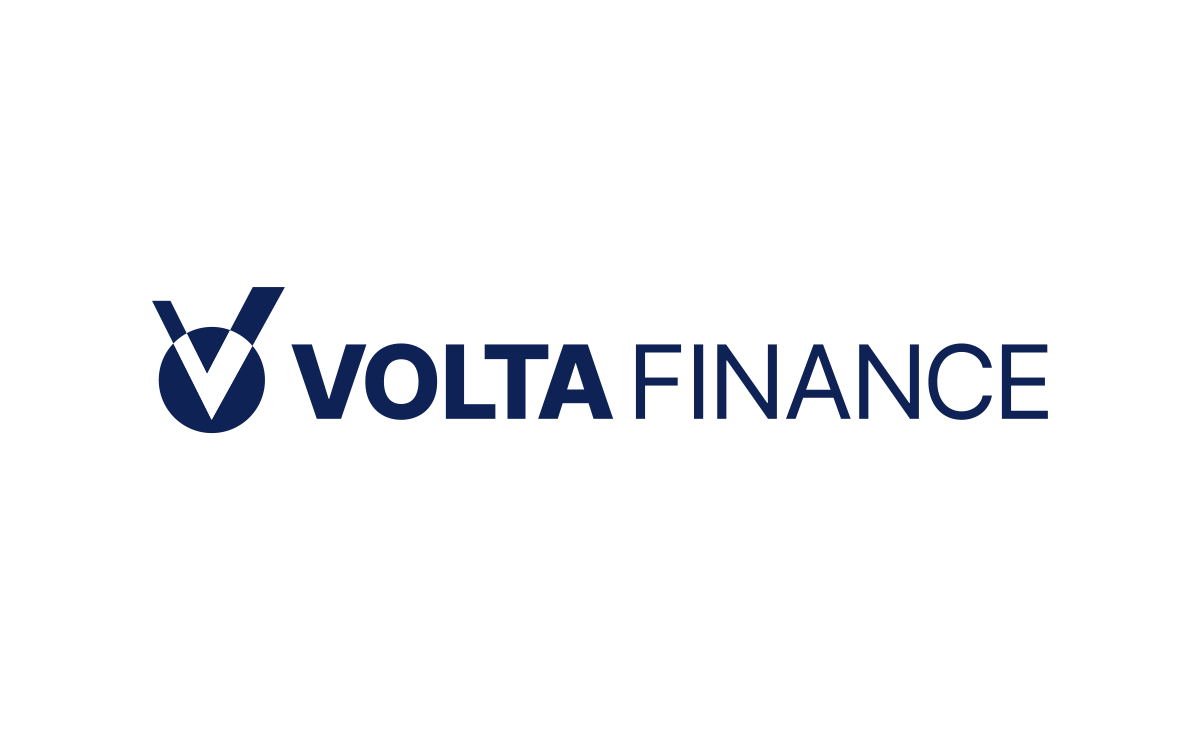City of London Investment Group (LON:CLIG) today announced final results for the year to 30th June 2018.
SUMMARY
• Funds under management (FuM) at 30th June 2018 were US$5.1 billion (2017: US$4.7 billion), an increase of 10%. In sterling terms, FuM increased by 8% to £3.9 billion (2017: £3.6 billion).
• Revenues, representing the Group’s management charges on FuM, were £33.9 million (2017: £31.3 million). Profit before tax was £12.8 million (2017: £11.6 million).
• Basic earnings per share were 39.5p (2017: 36.9p) after a tax charge of 21% (2017: 21%) of pre-tax profits.
• An increased final dividend of 18p per share is recommended, payable on 30th October 2018 to shareholders on the register on 12th October 2018, making a total for the year of 27p (2017: 25p).
CHAIRMAN’S STATEMENT
As the retiring Chairman after 12 years on your Board I am bound to reflect on where did we come from, how did we get to where we are today and how well prepared are we to face the inevitable challenges that tomorrow will bring?
When I joined the Board on flotation in 2006, we floated at a price of 180p giving a market capitalisation of £48.2 million. Funds under Management (FuM) were £2.8 billion, and profit before tax was £4.8 million at the financial year end. The core Emerging Markets Closed-End Fund (EM CEF) strategy accounted for close to 100 percent of both FuM and profits. We had c.130 clients, almost all in the US and already the quality of our client list was the envy of many of our competitors.
At 30th June 2018 FuM were just short of $4.0 billion and pre-tax profits for the 12 months were £12.8 million. The total return to shareholders since listing has been 377 per cent, a figure that compares very favourably with our industry.
How was this impressive result achieved particularly in the light of the rather variable performance of the Emerging Markets on which our business has historically been very dependent? Numerous factors are relevant but three drivers are worth listing: a focus on a well-established investment methodology, efficient and highly cost effective operations and a fair treatment of staff encouraging continuity and therefore operational consistency.
What of the future? Over the years we have invested heavily in nurturing new strategies in order to diversify away from the core EM CEF cash cow. New products take time to become established and be saleable to institutional clients. There is a chicken and egg dilemma – without investors a track record cannot be established but the investors won’t invest until they can be comforted by an impressive historic record. One can seed a new strategy with a few million dollars but then clients say they don’t want to be the first outside investor, and in any event the track record should be demonstrated with a fund of at least US$50 million – too big for us to seed.
It is against this background that we are delighted to be able to report that the diversification strategies now represent over 20 per cent of our FuM (18% at 30th June 2018) and are growing faster than the EM CEF product. It should be noted and understood that the investment methodology employed for the diversification products is closely related to that which we have developed and honed over many years for our core strategy. A combination of the new products with the still very profitable and viable core EM CEF strategy should ensure a rewarding future for all CLIG stakeholders including our shareholders.
Results
For the year ended 30th June 2018 pre-tax profits were £12.8 million (2017: £11.6 million) and profits after a tax charge of £2.7 million (21% of pre-tax profits) were £10.1 million (2017: profits of £9.1 million after a tax charge of £2.5 million, representing 21% of pre-tax profit). Basic and fully diluted earnings per share were 39.5p and 39.3p respectively (2017: 36.9p and 36.7p).
Funds under Management, the key driver of our profits, were US$5.1 billion (£3.9 billion) at 30th June 2018 (2017: US$4.7 billion or £3.6 billion), representing a 10% increase in US$ terms for the year.
As already noted, we are greatly encouraged by the extent to which our new, albeit in terms of methodology closely related, products are now a very meaningful percentage of our total FuM.
The core EM strategy underperformed net of fees for the full year whilst longer-term the record remains impressive. For the EM strategy discounts widened costing approximately 200bps and an underweight to China, specifically the IT sector, also detracted from performance. Frontier performance was close to the benchmark. The Developed and Opportunistic Value (formerly GTAA) strategies both recorded positive relative performance due to a combination of positive discount and allocation effects.
The Group’s overhead for the year to 30th June 2018 was £12.5 million (2017: £11.9 million) and the current monthly run-rate is c. £1.1m. With largely US dollar based income and substantial sterling costs the exchange rate continues to be a key factor in determining profits; compared to the previous year’s rate averaging 1.27 this represented a significant headwind with sterling strengthening to an average rate of US$1.35 to the pound over the year.
Dividends
Following on from last year’s 1p increase in the total dividend for the year to June 2017 and the 1p increase for this year’s interim dividend, your Board is recommending a further 1p increase for the final to 18p per share (2017: 17p) bringing the total for the year to 27p (2017: 25p), for dividend cover of 1.47 times (2017: 1.46 times). This is in line with your Board’s well-established policy of targeting a 1.2 times dividend cover over a rolling 5 year period taking into account years during that period when cover was well below 1.2 times.
Board
In anticipation of our founder and CEO, Barry Olliff, stepping down in 2019, Tom Griffith, who has been on our Board for 14 years with responsibility for Operations, was appointed Deputy CEO from February 2018. This has provided for a lengthy transition and handover period before Tom takes over the reins from Barry in early 2019. Again in anticipation, this time of my retirement from the Board as of the October AGM, we were delighted to welcome Jane Stabile as a new Non-Executive Director (NED) from 1st July 2018. Not only does this appointment ensure that we will continue to have the right balance on the Board between Executive Directors and NEDs, but Jane has already been able to provide more focus at Board level to the increasingly important area of Operations.
Following my retirement it has been agreed that Barry Aling will take over as Chairman. People seem to be obsessed these days with “upgrades” whether it’s their mobile phone or their seat on a flight. In this case I can confidently say that your Board will be getting a chairman upgrade! Barry, over his five years on your Board, has consistently demonstrated his understanding of the key issues and invariably applies both common sense and wisdom in his contributions to Board discussions. With important changes on the road ahead we will be fortunate to have Barry in the chair. We are also fortunate that Barry Olliff has agreed to discuss retaining an involvement with CLIG post 2019 through a consultancy role. The goal will be to combine a degree of continuity along with the inevitable change that is almost always required when a founder retires.
As in previous years we carried out a formal evaluation of the performance of the Board and its members. This confirmed that both the Board and its members had continued to operate effectively and I therefore recommend that all Directors standing for re-election be re-elected.
Outlook
As readers of my previous Chairman’s Statements will know, predicting the future direction of markets is above my pay grade. I can however observe that the Emerging Markets, which underlie our core product, are currently out of favour. Fortunately our increasingly important diversified products are largely focussed on Developed markets, including the US which is enjoying the Trump stimulus. EM problems are various and range from Argentina (debt) to Turkey (politics) to China (trade wars), with Donald Trump’s policies creating significant uncertainty. Having feet in both camps I take a sanguine view and leave it to shareholders to decide whether to sell EMs and buy into Developed markets or do the reverse. At City of London I believe we are well placed other than if there were a general downturn in markets worldwide and even then our flexible cost structure will stand us in good stead.
This year our AGM is on Monday 22nd October at our Gracechurch Street offices and all shareholders are most welcome. Following the meeting’s formal business your Directors look forward to having the opportunity to meet and talk to individual shareholders.
In the meantime I do encourage all stakeholders, especially clients and shareholders, to read on (see link below for access to the full annual report) as I believe that this report again presents a quite exceptional level of relevant information and transparency on our business underlining our commitment to excellence in all that we do.
David Cardale
Chairman
13th September 2018
START OF STRATEGIC REPORT
CHIEF EXECUTIVE OFFICER’S STATEMENT
In terms of the Group’s progress, the most significant event of the past financial year has related to the increased assets gained by our Diversification products.
Between Developed, Global Tactical Asset Allocation (now renamed Opportunistic Value), Tactical Income and Frontier, assets under management have increased from 10% to 18% of total Group FuM. While a response could be that this has been a long time coming, my reply would be that in the post 2008 world, everything takes longer as consultants and potential clients undertake deeper due diligence prior to making a commitment. Having said that, once a commitment is made it is likely to be long-term thus diversifying our sources of revenue and improving the quality of our earnings. While most of this new business will accrue fees at lower than EM rates, it would seem likely that we are now on track for this part of our business to grow significantly.
Investment performance
While the Diversification products have generally outperformed their relative benchmarks, I have gone into greater detail regarding our EM performance which has lagged the benchmark over the 12 month period ending June 2018. This was a result of widening discounts and to a lesser extent poor NAV performance from the underlying closed-end funds in which we invest. Our country allocation was positive over the period, led by an overweight to Russia. NAV performance was impacted by the strong performance of the IT sector, particularly in China. Many global, regional and China specific funds have maintained underweights to this sector due to valuation and/or corporate governance concerns as well as structural limitations. A further headwind to NAV performance relates to small cap exposure. For the past two years EM small cap has underperformed large cap by a significant margin; partly the flip side to the very strong IT sector which now constitutes over 28% of the index – for reference, this is the largest EM Sector index weight for at least 20 years. These structural headwinds will eventually mean revert, along with discounts. In the meantime we take comfort from the average size weighted discount on our portfolios at 16% which represents the widest level for at least 10 years. EM client flows have been broadly stable with modest outflows reflecting asset allocation rebalancing. Longer term (3-5 years), as referenced in the chart above, gross returns of the EM CEF strategy returns remain above average when compared with the US institutional peer group.
REIT’s
After a search lasting over a year, in July 2018 a team of two joined us to create a new REIT department. Our belief is that our investment process, as originally used with EM CEF’s, and now our other Diversification products, could also be used with REIT’s which also demonstrate the capacity for disproportionate alpha generation via pricing anomalies.
We are designing an EM REIT Fund with a relevant index to be used as a benchmark. As with our other Diversification products this will be a long term commitment and we will be seeding a fund prior to marketing.
CLIG diversification
We are continuing to consider corporate diversification opportunities. Having looked at many companies over the past ten or so years, we have found none that were suitable. Egos, investment performance, costs and culture differences were the main reason for our lack of success in terms of closure. With close to £20 million in the bank, if we found the right company we would be in a very good position to undertake a transaction that could enhance the Group’s earnings and share price. In the event that we don’t, my assumption is that the Board would give consideration to a share buy-back or the distribution of a special dividend.
Closed-end fund corporate governance
As you are probably aware just about 100% of our mandates require that we invest in closed-end funds. We therefore have a very real incentive to encourage the Boards of Directors who oversee the managers of these funds that they do demonstrate relevant oversight. Our view is that correct oversight will lead to a competitive product in what is increasingly becoming a competitive marketplace. As a result of this focus, we have been producing a Statement on Corporate Governance for Closed-End Funds since 1999 – this document articulates our position regarding certain principles that we believe will assist the Board of a fund not just with its governance, but with its overall profile in the marketplace. The next edition of this document will be released at the beginning of 2019. With the SWAD remaining so very wide, corporate governance is an increasingly relevant part of our work.
China fund
Having first invested in the China Fund Inc. (CHN) in the first quarter of 1998, we have watched as the corporate governance has gradually deteriorated. Whilst the earlier performance under Martin Currie was both relevant and ahead of the benchmark, recent events gave us cause for concern. While some of these were investment related, to a greater extent we were worried regarding governance issues – the Chairman had been in place for over 20 years, we were concerned regarding the manner in which a new manager had been selected and we were concerned regarding what seemed to be an increasing Management Expense Ratio (MER). As a result we very unusually proposed the appointment of two new Directors and suggested the contract be terminated under the Investment Act of 1940. Most of our concerns were voiced via regulatory filings – fortunately shareholders were very supportive, resulting in two votes that were approximately two thirds for our proposals and one third against.
In the middle of the transaction CLIM and I were sued by CHN for our actions, and, even though we won in both State and Federal Court, also on appeal, the legal costs of defending our position were c.$300,000. While many shareholders will have watched these events real time there are a couple of points worth noting. In the US the loser of a Court action does not pay the winners legal expenses. CLIM has been invited and is in the process of making suggestions that we believe will improve the Corporate Governance of CHN and expect the outcome to be a slimmed down Board, reduced MER, a significant return of assets at close to NAV, plus a change of manager. This is the first time that we have been sued, but I believe that the outcome vindicated our position – US CEF’s are there to provide requisite exposure for shareholders, not to go around suing shareholders (the owners).
Targets, margins and FuM
As shareholders will be aware, CLIM does not use targets. This is because over an extended period history shows us that they provide the seeds of their own destruction. Targets imply / encourage growth, and in an environment of declining index levels or changed circumstance they can, and regular as clockwork do, lead to unnecessary risk taking. Risk taking (and a focus on targets) invariably leads to reduced margins. If margins are reduced, staff cannot be paid adequate bonuses thus leading to employee insecurity and potentially reduced tenure. The approach that I have advocated for 30 years is to learn from my past experience and to gradually develop the business. This approach while quite slow and possibly giving the impression of being ponderous has served shareholders well, as can be demonstrated by comparing the total return of our share price compared with selected peers since CLIG’s listing in 2006. The Total Shareholder Return graph can be viewed in the Key Performance Indicator section on pages 20 to 24 of the full Financial Statements (see Chairman’s Statement for link).
Our operating margin, which is the weighted average net fee rate earned by the Group, has reduced from 0.86% in June 2016 to 0.80% at June 2018. While to a small extent this reflects a change in our Emerging Market fees, the major influence is from the changing mix of business. We receive lower fees for our Diversification products thus while the overall margin has been reduced their growth has benefited the P&L.
Business plans
Many small companies want to become big. My view is that it’s better to keep each of the components of the business relatively small – it being better to have an increasing number of divisions or small units. I would add that in the fund management business many firms become too “large” and then suffer as they receive redemption requests based on poor investment performance. After reviewing the eVestment Alliance database of Emerging Market managers, starting in December 1991, over 30% have removed an Emerging Markets product from their database. The average product life was 9 years. During this period we have closed to new investors on 3 occasions while all of our products remain in the database.
Board changes
You will probably be aware from our interim report of Tom Griffith’s appointment as Deputy CEO. Tom will be appointed Group CEO in early 2019. I would like to wish Tom all the best both during the transition, and also with his future appointment. Tom and I have worked closely together for nearly 20 years. Tom will head a very experienced management team.
In addition, and on behalf of the Board, I would like to thank David who has been a part of our Board’s deliberations for twelve years. David will be standing down as Chairman during the forthcoming AGM.
Having taken on the Chairmanship from Andrew Davison in 2012, David has overseen our deliberations with patience and pragmatism. He has also been very successful in creating a consensus when this seemed most unlikely. I look forward to welcoming Barry Aling as our new Chairman. Barry is well-versed in the ways of the City and is well equipped to continue David’s good stewardship.
My intended CLIG share sales
As in previous years I would like to advise shareholders of my current intentions regarding share sales.
As I approach retirement on 31st December 2019, my intention is to sell 500,000 shares at each of 450p, 475p, and 500p subject to close periods etc.
In my opinion this is an accountable way to proceed and is in keeping with the way that I have attempted to run the firm since its inception.
City of London Investment Group outlook
From a CLIG perspective the outlook for our business has improved from last year. Our Diversification products are gaining traction and while US markets have recently outperformed, our EM exposure has underperformed. CLIM’s Emerging Market CEF’s SWAD is the widest for over a decade and as implied earlier in my statement, we are actively urging many funds to improve their corporate governance.
Also as mentioned earlier, we have a lot of cash on our balance sheet which will need to find a good home.
Barry Olliff
Chief Executive Officer
13th September 2018
BUSINESS DEVELOPMENT REVIEW
Overview
Long-term investment performance in the emerging markets closed-end fund (CEF) strategy remains strong, with first or second quartile results versus manager peers over the 3 and 5-year rolling periods ending 30th June 2018.
There were new inflows of $319 million in our core emerging market strategies, which were countered by outflows of $534 million, leading to net outflows of $215 million as clients rebalanced after strong gains in emerging markets over 2017.
Fundraising in the diversification products resulted in inflows of $474 million and outflows of $74 million for a net gain of $400 million. Inflows by product were $279 million in Developed Markets strategies, $67 million in Frontier Emerging Markets strategies and $54 million in Opportunistic Value strategies.
Diversification products now represent circa 18% of Group Assets Under Management (AUM), compared with 10% last year. These additional assets will assist in efforts to raise the profile of our extension CEF products with institutional consultants and plan sponsors.
Products
A combination of strong performance and additional AUM into our diversification products resulted in assets growing in these strategies by 95% over the year.
The Developed Markets CEF Strategy utilises our experience with closed-end funds in our core emerging markets strategy to provide exposure to global developed markets.
Opportunistic Value CEF Strategy, formerly known as Global Tactical Asset Allocation CEF Strategy (GTAA), was renamed as it encompasses a variety of asset classes via closed-end funds and adopts a go anywhere approach. While this is a separate team from the team managing client assets in the emerging markets, both teams use a similar methodology and share internal resources. Both taxable and tax-exempt products are available.
The Frontier Emerging Markets CEF Strategy, which is an extension of the emerging markets core equity product focusing on the smallest or pre-emerging markets with high growth potential.
Performance
Relative performance over the period was negative for the Emerging Markets strategy due to negative NAV and discount effects. The Developed and Opportunistic Value (formerly GTAA) strategies all recorded positive relative performance due to a combination of positive discount, NAV and allocation effects. The Frontier strategy had slight underperformance vs the S&P Frontier Index due to negative NAV and currency effects, but outperformed the MSCI Frontier Index over the period.
The Global Emerging Markets Composite investment returns for the rolling one year ending 30th June 2018 were 4.3% vs. 8.2% for the MSCI Emerging Markets Index in USD and 8.1% for the S&P Emerging Frontier Super BMI Index in USD.
The Global Developed Composite investment returns for the rolling one year ending 30th June 2018 were 11.2% vs. 7.3% for the MSCI ACWI ex US in USD.
The Frontier Markets Composite investment returns for the rolling one year ending 30th June 2018 were 4.2% vs. 4.5% for the S&P Frontier EM 150 benchmark in USD.
The Opportunistic Value Composite investment returns for the rolling one year ending 30th June 2018 were 8.3% vs. 6% for the 50/50 MSCI ACWI/Barclays Global Aggregate Bond index in USD.
City of London Investment Group Outlook
Marketing efforts will continue to be targeted at investment consultants, foundations, endowments and pension funds. We will also continue to introduce our capabilities to family offices, outsourced CIO firms and alternative consultants. Our Developed and Opportunistic Value capabilities will be the focus of our product diversification and business development activities.











































